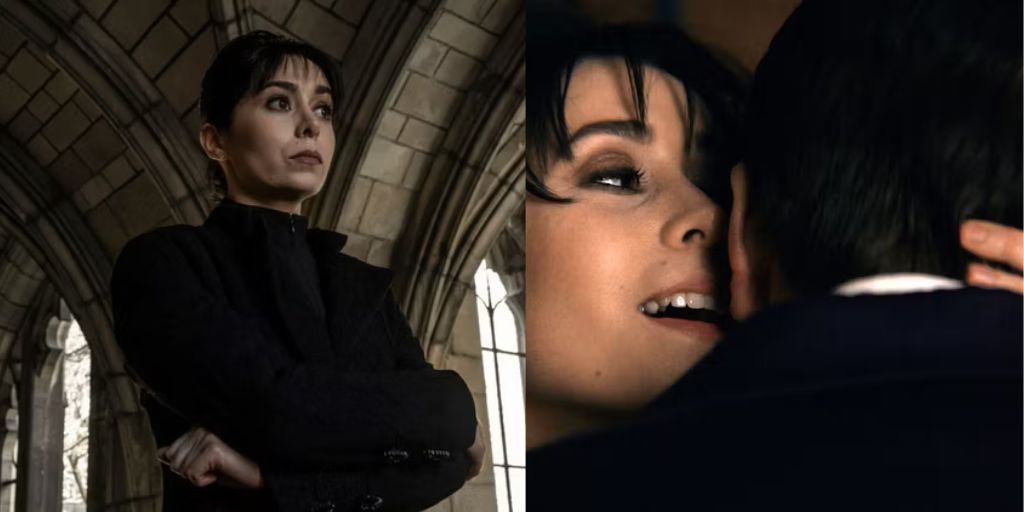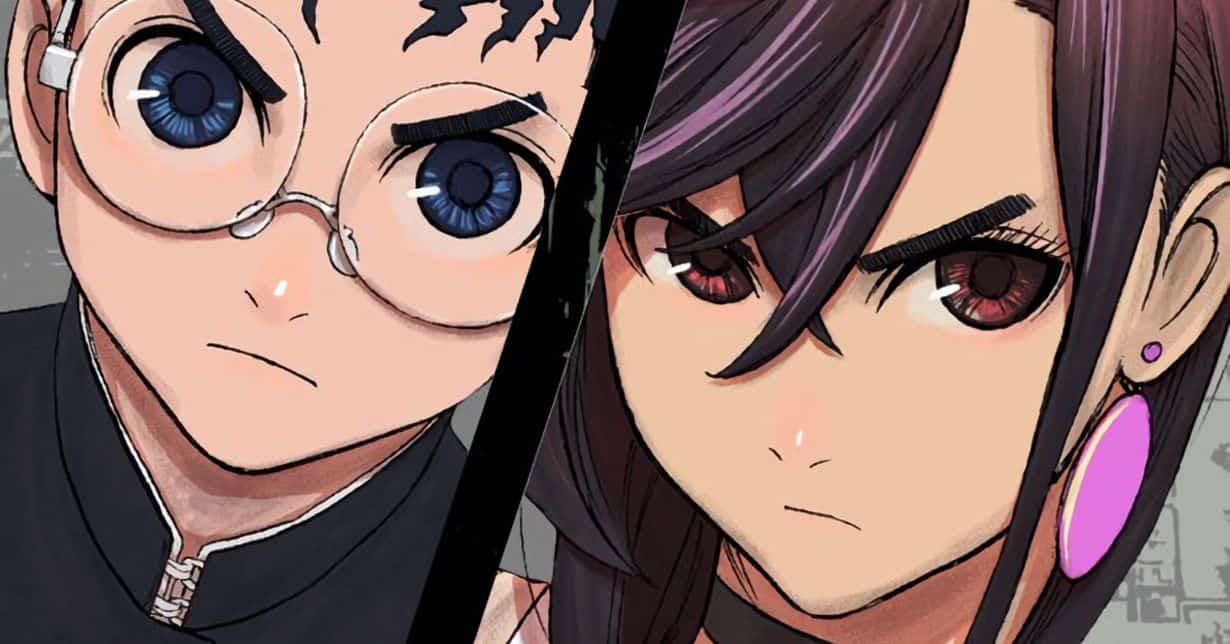The Penguin, Oz (Colin Farrell) stands out as the most watchable character, yet Sofia Falcone (Cristin Milioti) proves to be the most intriguing one. From her first appearance, Sofia attracts the audience with her complexity and depth.
Each scene featuring her reveals something new about her past, motives, and desires. While she embodies a frightening presence, there are moments when we can genuinely feel sorry for her.
A prime example is the poignant scene where she speaks to her cousin at Alberto Falcone’s (Michael Zegen) wake. In this moment, the isolation and sorrow she experiences become palpable.
In the latest episode of The Penguin, titled “Inside Man,” we witness a chilling aspect of Sofia’s character: self-inflicted scars on her neck that she reveals after waking from a nightmare. These scars signify more than just physical damage; they contain the immense trauma that Sofia carries with her.
The scars contribute to her characterization, transforming her into a multifaceted threat. As viewers, we start to understand her motives and the pain that drives her actions. This complexity makes Sofia a compelling character, echoing Oz’s vulnerability as a gangster.
The Origin of Sofia’s Scars
The first clear picture of Sofia’s scars occurs after she wakes from a nightmare. The unsettling image of her sleeping in a closet links back to her earlier therapy session at the episode’s opening. During that session, she articulates her feelings of unsafety, claiming she isn’t safe because she is “home.”
This statement sheds light on the deep-rooted trauma she carries from her past experiences. As the episode progresses, we catch brief look of these scars as they peek out from under her collar after she emerges from hypnosis.
Craig Zobel, the director, explained to Cinema Blend that this scene aims to illustrate the considerable trauma Sofia has endured during her time in Arkham. This trauma appears to manifest in the form of self-harm, suggesting that her scars are not merely for show; they represent her internal struggles and the pain she cannot escape.
Earlier in Episode 1, Sofia frequently wears scarves to cover her scars, revealing her embarrassment and shame about them. This detail highlights the anguish these scars carry, adding another layer of complexity to her character.
In Episode 1, Sofia describes how she and other patients faced the humiliating experience of being stripped naked every morning. This traumatic memory suggests a profound level of gaslighting she experienced during her time there.
This aspect of her history re-emerges during a tense moment with Oz when she threatens him, daring him to challenge her. The scars could also reference her nickname, The Hangman, indicating that she feels her crimes and trauma are metaphorically choking her.

The way she claws at her throat reveals her desperate need for release, underscoring the psychological battle she faces. She often relies on her therapist, Dr. Julian Rush (Theo Rossi), to remind her to “breathe,” emphasizing her struggle for emotional control.
Sofia’s Danger to Oz
The significance of Sofia’s scars extends beyond their physical representation; they illustrate the extent of her danger to Oz and others. Unlike many typical villains who bear scars merely to appear evil, Sofia’s scars reveal a deep-seated trauma.
One of her critical connections to her trauma is through Alberto, who frequently visited her and provided a sense of comfort. In her conversation with Oz, she mentions that Alberto always came to see her, reinforcing the idea that their relationship was a source of support for her amidst her suffering.
As Craig Zobel mentioned in the interview, Alberto was a “true ally” to Sofia, and his death resonates deeply with her. This loss transforms her into a more motivated threat, as she has little left to lose. Her trauma becomes a powerful catalyst for her actions, fueling her desire for vengeance.
With everything she cared for stripped away from her, she becomes a character who operates from a place of deep emotional pain, making her unpredictable and dangerous.
The scars on her neck serve to intensify her threat level. They do not just make her a scarred villain; they imbue her with a sense of vulnerability that makes her actions even more compelling. When Sofia walks into Alberto’s wake, we see how her past continues to haunt her.

The tension in that moment is palpable; everyone around her is aware of her capability for violence. At the same time, it is genuinely heartbreaking to witness her yearning for connection and love. With Alberto gone, the only person who truly cared for her, she becomes increasingly dangerous, driven by grief and rage.
The Complexity of Sofia’s Character
Sofia Falcone’s scars contribute significantly to her character development. They provide her with the same treatment as Oz, imbuing her with a vulnerability that allows the audience to engage with her on a deeper level.
This complexity makes their violence more frightening because we understand the motivations behind it. It is essential to highlight that Sofia’s violent tendencies are not glorified; rather, they are presented as a product of her suffering.
For instance, her desire to find her brother’s murderer serves as a driving force behind her actions. While her methods may be violent and extreme, they stem from a place of genuine hurt. As she searches for answers and seeks revenge, her past continues to inform her decisions.
Each violent act becomes a reflection of her pain and desire for closure, making her actions more relatable, even if they are morally questionable.
Sofia’s scars also act as a reminder of her history and the trauma she has endured. They signify her struggle to reconcile her past with her present. Despite her fearsome reputation, the audience witnesses her fragility and vulnerability, allowing us to empathize with her journey.

The way she internalizes her pain and reflects it onto herself speaks volumes about her character. Her scars do not merely make her a villain; they create a character filled with depth and complexity.
The Intersection of Love and Violence
One of the most intriguing aspects of Sofia’s character is the intertwining of love and violence. Her violent tendencies are often rooted in her quest for love and connection.
For Sofia, love becomes a double-edged sword; it provides her with comfort and motivation while simultaneously driving her to desperate and dangerous actions. Her desire to avenge her brother’s death is not just about revenge; it is also about reclaiming the love she has lost.
This theme becomes evident during her interactions with others. The loss of Alberto, the one person who cared for her, leaves her feeling isolated and desperate. As she shows her grief, her actions become increasingly volatile.
The scars on her neck symbolize the emotional toll this loss has taken on her, as well as the lengths she will go to find a sense of belonging and purpose. Her quest for vengeance is not merely a quest for justice; it is an attempt to fill the void left by the people she has lost.
As the audience witnesses her struggle, it becomes clear that Sofia’s violence is often fueled by a desire for love and acceptance.
This duality creates a fascinating dynamic within her character. While she poses a significant threat to Oz and others, she also elicits sympathy and understanding. Her scars remind us that her journey is not solely one of violence; it is also a journey of seeking healing and reconciliation with her past.
The Depth of Sofia Falcone
In the end, Sofia Falcone’s scars serve a significant purpose. They represent her trauma and pain without glorifying it. Through her character, we genuinely feel sorry for someone who, just a short time ago, threatened to harm Oz.
The audience witnesses her profound hurt, which influences her decisions and actions. As she internalizes that pain and reflects it onto herself, her understanding of suffering deepens, making the threat of her inflicting it on others all the more chilling.
Sofia’s journey in The Penguin is not just about violence and revenge; it is also a poignant way of love and loss. Her scars serve as a physical representation of her emotional struggle, reminding viewers of the complexity of her character. As she searches for her brother’s murderer, we see how her past continues to shape her present.

Sofia Falcone is not just a villain; she is a character filled with depth, vulnerability, and pain. Her scars tell a story of trauma and resilience, making her both fascinating and tragic to watch.
The combination of her desire for love, her violent tendencies, and her complex backstory creates a character who is far more than just a threat. Instead, she embodies the complexities of human emotions, showcasing how love and pain can intertwine in unexpected ways.
As The Penguin progresses, Sofia’s journey promises to be one of self-discovery, healing, and the quest for justice, leaving viewers eagerly anticipating what lies ahead.





